For your next wine blend, go for Bordeaux
In the notes below, we overview Left Bank vs Right Bank red Bordeaux blends; also white Bordeaux blends. Use these notes as a guide to making your own blends in the style of Bordeaux.

Vineyard in Bordeaux
Bordeaux red blends most often consist of some mixture of Cabernet Franc, Cabernet Sauvignon, and Merlot. Malbec and Petit Verdot are also added at smaller ratios.
Bordeaux white blends typically consists of Sauvignon Blanc and Sémillon. A little Muscadelle is sometimes added as well.
The Left Bank

The appellations on the Left Bank are the most prestigious : Paulliac, St. Julien, St. Estephe, Margaux, Haut Medoc to name a few. You will find Chateaux Lafite, Mouton Rothschild, Latour, Margaux, and Haut-Brion on the Left Bank and their wines retail for thousands USD.
Grapes of the Left Bank
Cabernet Sauvignon is the main base for the blend here (usually over 60% of the blend), where it is complimented by Cabernet Franc, Merlot, and sometimes Petit Verdot.
The Right Bank

Map of the Left and Right Bank of Bordeaux
Less renowned but still famous appellations include Pomerol, Petrus, and St. Emilion.
Grapes of the Right Bank
Merlot is the main base on the Right Bank (usually over 60% of the blend), with Cabernet Franc and sometimes Cabernet Sauvignon consisting of the rest. In many cases built to be enjoyed sooner, these wines are often softer, fruitier, and more round than their Left Bank counterparts.
The White Bordeaux

White Bordeaux (Bordeaux Blanc) can be dry or sweet. The best known dry whites come from Pessac Leognan, and the best known sweet whites come from Sauternes and Barsac.
Grapes of the Bordeaux Blanc
Sauvignon Blanc and Semillon are the primary grapes used for either Bordeaux dry or sweet white wine. Typically 70% of dry white Bordeaux are composed of Sauvignon Blanc, and sweet white Bordeaux can consist of 70%-100% Semillon with a small amount of Sauvignon Blanc or still smaller amounts of Muscadelle.
CURRENTLY AVAILABLE BORDEAUX VARIETALS:
Each pail includes 5 gallons of grape must
Product will arrive partially frozen.
Rutherford AVA, Napa Valley, CA
Brix: 25.2 , pH: 3.81 , TA: 3.6 , YAN: 100 mg/L
(Full ETS Lab Report in photos)
Harvested and destemmed: October 13th
2025 Alsace Vineyard Petit Verdot
A Rare Expression from Rutherford’s Alsace Vineyard
From Rutherford’s acclaimed Alsace Vineyard — where wines have earned up to 99 points from Wine Spectator and 97 from Robert Parker — this limited release offers a rare opportunity to work with fruit from one of Napa Valley’s most distinguished vineyards.
The Vineyard
Nestled along the eastern side of Napa Valley just north of Oakville and bordering the Silverado Trail, Alsace Vineyard stands as a cornerstone of Rutherford’s legendary terroir.
Here, red and brown gravelly loam soils with excellent drainage meet warm afternoon sun and cool nighttime air, yielding small, intensely flavored berries with remarkable concentration and balance. The result: fruit that captures Rutherford’s hallmark “dusty” elegance and polished texture vintage after vintage.
Farming & Clone
Planted in 2009 and managed by Garvey Vineyard Management under sustainable, fish-friendly practices, the ENT400 Petit Verdot clone thrives in this site’s ideal microclimate. Loose, open clusters and small, thick-skinned berries deliver exceptional color density and layered aromatics.
Precise canopy management ensures even ripening and vibrant natural acidity, while balanced sunlight exposure creates structure without harshness — a hallmark of expertly farmed Rutherford fruit.
Flavor Profile
This Rutherford Petit Verdot produces a deeply saturated, dark-hued must with compelling aromatic intensity. Expect primary notes of dark cherry and dark chocolate, framed by a vivid violet tone distinctive to the ENT400 clone.
Firm yet polished tannins and bright acidity provide the backbone for wines that are complex, concentrated, and elegant — suitable for blending or as a powerful standalone expression.
Subtle graphite and classic Rutherford dust linger on the finish, uniting fruit, spice, and minerality in a seamless expression of place.
Highlights
• Vineyard: Alsace Vineyard, Rutherford AVA, Napa Valley
• Varietal: Petit Verdot (Clone ENT400)
• Planted: 2009
• Soils: Red and brown gravelly loam with excellent drainage
• Farming: Sustainable and fish-friendly, managed by Garvey Vineyard Management
• Critical pedigree: Wines from this vineyard have earned up to 99 points (Wine Spectator) and 97 points (Robert Parker)
• Retail comparison: Finished wines from this vineyard retail for $64/bottle
Extremely limited. Singular to Rutherford.
Provenance Note: This product is made from fruit sourced from Alsace Vineyard in Rutherford, Napa Valley. The vineyard name is used here for factual origin reference only and does not imply endorsement or affiliation.
Each pail includes 5 gallons of grape must
Product will arrive partially frozen.
Calistoga AVA, Napa Valley, CA
Clone 7:
Brix: 23.5 , pH: 3.95 , TA: 2.8 , YAN: 66 mg/L
Clone 337:
Brix: 23.3 , pH: 3.83 , TA: 2.9 , YAN: 60 mg/L
(Full ETS Lab Report in photos)
Photos coming soon — we’re working directly with the vineyard team to provide approved imagery.
Harvested and destemmed: TBD
A Hidden Gem of Northern Napa
Known to insiders as “The Calistoga,” this single-vineyard Cabernet Sauvignon comes from a confidential northern Napa site whose fruit is prized by leading wineries, with finished bottles retailing for up to $170 each. Its reputation for a dark, layered Cabernet with Calistoga power and a mineral spine has made it one of the most sought-after vineyard sources in the valley.
Climate & Vintage Character
Planted in early 2000s on volcanic benchland soils, this vineyard rises between close to 600 feet in elevation. The gravelly and cobbly loam terrain provides perfect drainage while holding a whisper of subsurface moisture from the nearby hills. The result is fruit of remarkable concentration, depth, and natural balance.
Clonal Composition
Two limited blocks are offered this year, each expressing a different facet of the site’s character:
Clone 7 (CS7)
→ Delivers the classic Napa backbone: deep color, cassis, and firm, age-worthy tannins.
Clone 337 (CS337)
→ Brings perfume and precision: violet, plum, graphite, and silky texture.
Together, they form a Cabernet that marries power with finesse, showing dark fruit, cocoa, and a lingering mineral finish emblematic of northern Napa’s volcanic benchlands.
Highlights
Calistoga AVA volcanic benchland terroir
Sustainable, fish-friendly farming practices
Balanced blend of Clone 7 and Clone 337 Cabernet Sauvignon
Cool 2025 vintage with lifted aromatics and refined structure
Single-vineyard Napa fruit sourced from a confidential, world-class site
Photos coming soon — we’re working directly with the vineyard team to provide approved imagery.
Extremely limited. Singular to Calistoga.
Each pail includes 5 gallons of grape must
Product will arrive partially frozen.
Contra Costa County, California
Brix: 25.8 , pH: 3.66 , TA: 3.5 g/L , YAN: 107 mg/L
(Just click through photos for ETS Lab Report or CLICK HERE)
Harvested September 11th, 2025
Planted in 1888
Sandy Lane Vineyard, located in Contra Costa County, is a rare and remarkable site—own-rooted, head-trained, dry-farmed vines planted in 1888 grow in deep Delhi sandy loam just feet from the Sacramento River Delta. These soils are inhospitable to phylloxera, which is why the original vines are still alive and producing fruit today—an increasingly rare phenomenon in California or anywhere else in the world.
Mourvèdre from this vineyard has gained a reputation for its depth, structure, and signature savory edge. While the grape is often blended, single-varietal bottlings from Sandy Lane have shown distinctive notes of boysenberry, black fruit, sage, lavender, forest floor, and dried herbs, with a naturally firm tannic backbone and persistent finish. The fruit carries the unmistakable imprint of its place: old vines, wind-swept sand, and a slow, deliberate growing season shaped by the Delta breeze.
This vineyard shares a fence line with Evangelho, now farmed by Bedrock Wine Co., and has been used by Ridge Vineyards and other top producers. These are true California heritage vines—enduring, expressive, and deeply rooted in the history of West Coast winemaking.
Quantities are extremely limited.
Each pail includes 5 gallons of grape must
Product will arrive partially frozen.
Contra Costa County, California
Brix: 26.5 , pH: 3.59 , TA: 4.9 g/L , YAN: NA mg/L, Ammonia: 56 mg/L
(Just click through photos for ETS Lab Report or CLICK HERE)
Harvested September 11th, 2025
Planted in 1888
Alicante Bouschet is a powerhouse red grape—and a true rarity in the world of vitis vinifera. As a teinturier varietal, its flesh is red, not just the skin, producing incredibly dark, deeply pigmented wines with intense structure and richness.
Sourced from own-rooted, dry-farmed, head-trained vines planted in 1888 at Sandy Lane Vineyard in Contra Costa County, this Alicante Bouschet is as historic as it is bold. The vineyard’s Delhi sandy loam soils, paired with daily cooling Delta breezes, allow the fruit to ripen fully while retaining freshness—a key to balance in a grape known for its density.
Historically, Alicante earned its reputation during Prohibition, when its thick skins and inky juice made it ideal for shipping cross-country to East Coast bootleggers. Today, in the hands of passionate winemakers, it produces full-bodied, tannic reds with aromas of dark chocolate, roasted plum, and crushed rock, and can be built to age or blended to add depth and color.
Bedrock Wine Co. farms the neighboring Evangelho Vineyard, just next door, and Ridge Vineyards has produced bottlings from this exact site—further affirming the pedigree of this small, sandy patch of Contra Costa history.
Expect inky black wines with structure, concentration, and enduring character. A rare offering from a legendary site.
Each pail includes 5 gallons of grape must
Product will arrive partially frozen.
Contra Costa County, California
Brix: 26.2 , pH: 3.77 , TA: 3.5 g/L , YAN: 99 mg/L
(Just click through photos for ETS Lab Report or CLICK HERE)
Harvested September 11th, 2025
Planted in 1888
Just east of the San Francisco Bay, nestled in the granitic beach sands of Contra Costa County, lies Sandy Lane Vineyard—a living relic of California’s earliest winegrowing history. Planted in 1888, these own-rooted, head-trained, dry-farmed vines have endured for well over a century—defying phylloxera thanks to the vineyard’s deep, sandy soils, which create a hostile environment for the root louse. Very few own-rooted vineyards of this age remain in California, or anywhere in the world.
This is our first year offering Carignan from Sandy Lane, and we couldn’t be more excited. The fruit from these ancient vines produces wines that are deeply colored, texturally rich, and bursting with flavors of bramble fruit, spice, dried herbs, and savory minerality.
Ridge Vineyards has worked with this vineyard in the past, and Bedrock Wine Co. currently owns and farms the neighboring Evangelho Vineyard, just next door—a vineyard with nearly identical growing conditions.
Sandy Lane is planted in Delhi Sandy Loam, a soil that looks and feels like beach sand. Afternoon Delta breezes act as natural air conditioning for the vines, moderating the warm growing days and preserving natural acidity. Combined with dry farming and own-rooted vines, this site yields fruit of remarkable concentration, structure, and aromatic lift.
This is a rare opportunity to ferment history. Quantities are extremely limited.
Each pail includes five and quarter gallons of grape juice. Product will arrive partially frozen.
Lodi, California
Brix: 20.6, pH 3.73: , TA: 5.5 g/L (Full Lab Report in Photos)
Harvested September 8th, 2023
This Sauvignon Blanc was planted in 1988 in sandy loam soil, and has historically provided light yields that provide fruit with concentrated flavors.
The juice features crisp grassy aromas coupled with flavors of green apple and melon, with hints of tropical (papaya/guava), resulting in a soft, smooth, rounded wine.
“Lying directly east of the largest gap in California’s Coast Ranges – the San Francisco Bay – Lodi experiences a Mediterranean climate characterized by warm, dry summers and cool, wet winters. During the growing season, warm, sunny days allow for optimal ripening of winegrapes. By contrast, cool winds off the Pacific Ocean which travel inland over a network of waterways act a natural air conditioner for the region, helping winegrapes maintain racy acidity. Together, geography and climate provide Lodi the unique ability to grow an unusually diverse range of winegrapes. Though Lodi is sometimes perceived as a hot-climate region, in reality, average temperatures are comparable to or even lower than other well-known regions like Healdsburg (Sonoma), St. Helena (Napa Valley), and Paso Robles."
“Lodi’s diverse soils were formed thousands of years ago through geological events and alluvial waters. Two major rivers originating in the Sierra Nevada–the Mokelumne and Cosumnes—have brought soils rich in granitic-based minerals that complement the fine sandy loam soils surrounding the community of Lodi. Recent expansion has driven vineyards into previously undeveloped areas along the eastern edge of the appellation where a range of older lower fertility soils are found; these ideal winegrowing soils range from heavier clay-based soils in the south to well-drained stony soils in the north. A few of the more dominant soils in the region include Tokay Fine Sandy Loam, Tuscan Stony Loam, San Joaquin Loam, and Archerdale Clay Loam. The fine, well-draining Tokay Sandy Loam is home to the majority of Lodi's fifty- to one hundred-year-old Zinfandel vines.”
Each pail includes 5 gallons of grape must
Product will arrive partially frozen.
Alexander Valley AVA, Sonoma County, California
Brix: 23.0, pH: 3.73 TA: 3.71g/L, YAN: 75 mg/ L (full lab report in photos)
Clone 9, 1616C
Harvested October 3rd, 2023
Sustainably farmed
“Alexander Valley’s landscape gradually rises on the east into gradual benchland slopes, where soils change to gravelly, sandy loam, balanced in nutrients and organic matter—the result of mountain soils gradually eroding downhill over millennia to deposit layers of rich soils in the benchlands. Primarily Yolo and Cortina, are well-drained due to their sloping elevation and minimal amount of clay; they also possess the ideal calcium magnesium ratio required for high-quality Cabernet Sauvignon. Cortina’s added gravel texture helps create wines with rich tannins and purity of varietal character. The valley’s first bench snakes along the west side of Highway 128 with its gentle slopes barely noticeable as it rolls into the second bench. These two benchlands create long, lingering swaths of vineyard slopes with soils that elicit soft tannins and intense aroma in Cabernet Sauvignon and other Bordeaux varietals.
80% of the Alexander Valley vineyard parcels are grown in the valley’s benchlands and the majority of which are clustered in the middle of the valley at the base of the Mayacama Mountains planted to Cabernet Sauvignon. The quality comes not from the slope of the vineyard, but directly from the soil’s depth and composition.
Weathering, erosion, gravity, and water movement have further moved and settled things into a hodgepodge of soils that require testing and experience to match the right variety, rootstock, amendments and irrigation schemes to each site.”
Each pail includes 5 gallons of grape must
Product will arrive partially frozen.
Alexander Valley AVA, Sonoma County, California
Brix 25.5, pH 3.78, TA: 3.4 g/L, YAN 99 mg/L
(Full Lab for both clones in photos)
Harvested October 3rd, 2023
Sustainably farmed
“Alexander Valley’s landscape gradually rises on the east into gradual benchland slopes, where soils change to gravelly, sandy loam, balanced in nutrients and organic matter—the result of mountain soils gradually eroding downhill over millennia to deposit layers of rich soils in the benchlands. Primarily Yolo and Cortina, are well-drained due to their sloping elevation and minimal amount of clay; they also possess the ideal calcium magnesium ratio required for high-quality Cabernet Sauvignon. Cortina’s added gravel texture helps create wines with rich tannins and purity of varietal character. The valley’s first bench snakes along the west side of Highway 128 with its gentle slopes barely noticeable as it rolls into the second bench. These two benchlands create long, lingering swaths of vineyard slopes with soils that elicit soft tannins and intense aroma in Cabernet Sauvignon and other Bordeaux varietals.
80% of the Alexander Valley vineyard parcels are grown in the valley’s benchlands and the majority of which are clustered in the middle of the valley at the base of the Mayacama Mountains planted to Cabernet Sauvignon. The quality comes not from the slope of the vineyard, but directly from the soil’s depth and composition.
Weathering, erosion, gravity, and water movement have further moved and settled things into a hodgepodge of soils that require testing and experience to match the right variety, rootstock, amendments and irrigation schemes to each site.”
Each pail includes five and quarter gallons of grape juice. Product will arrive partially frozen.
Lodi, CA
Brix: 23.4, pH: 4.19, TA: 5.7 g/L
Harvested September 18th, 2022
Malbec seems an unlikely hero for a sparkling or dry blush choice, but when you want your rosé to show some real color and character, then Malbec is the way to go. Whether your final wine is crisp and dry or round and sweet, the lovely strawberry, apple, and rhubarb flavors and aromas are a delight either way.
Lying directly east of the largest gap in California’s Coast Ranges – the San Francisco Bay – Lodi experiences a Mediterranean climate characterized by warm, dry summers and cool, wet winters. During the growing season, warm, sunny days allow for optimal ripening of winegrapes. By contrast, cool winds off the Pacific Ocean which travel inland over a network of waterways act a natural air conditioner for the region, helping winegrapes maintain racy acidity. Together, geography and climate provide Lodi the unique ability to grow an unusually diverse range of winegrapes. Though Lodi is sometimes perceived as a hot-climate region, in reality, average temperatures are comparable to or even lower than other well-known regions like Healdsburg (Sonoma), St. Helena (Napa Valley), and Paso Robles."“Lodi’s diverse soils were formed thousands of years ago through geological events and alluvial waters. Two major rivers originating in the Sierra Nevada–the Mokelumne and Cosumnes—have brought soils rich in granitic-based minerals that complement the fine sandy loam soils surrounding the community of Lodi. Recent expansion has driven vineyards into previously undeveloped areas along the eastern edge of the appellation where a range of older lower fertility soils are found; these ideal winegrowing soils range from heavier clay-based soils in the south to well-drained stony soils in the north. A few of the more dominant soils in the region include Tokay Fine Sandy Loam, Tuscan Stony Loam, San Joaquin Loam, and Archerdale Clay Loam. The fine, well-draining Tokay Sandy Loam is home to the majority of Lodi's fifty- to one hundred-year-old Zinfandel vines.”
Each pail includes five gallons of grape must. Product will arrive partially frozen.
Livermore Valley, California
Brix 25.7, pH 3.7, TA .59
Harvested October 11th, 2019
This vineyard site in the historic Southwestern corner of the Livermore Valley was part of the original Ruby Hill Winery planted in 1885 by John Crellin. The vineyard and winery remained operational through a series of owners and even through Prohibition. More recently the vineyard was leased and managed by Wente who replanted it to Merlot, Cabernet Sauvignon, and Sangiovese in 2000. The Ruby Hill District of Livermore sits at 800 feet elevation and consists mainly of fine, gravelly sand loam, and sedimentary silt loam soils. These soils are very well-draining and average over 50 inches deep. The area is slightly cooler than the rest of the valley and experiences later harvest and longer hang time.The climate of the Livermore Valley is almost exactly the same as that of the St. Helena and Calistoga in the Northern Napa Valley. Morning fog, cold nights, and winds coming off the Bay temper the hot days and allow the grapes to preserve acidity while still achieving ripeness. The Livermore Valley is California's only wine growing region with an East-West orientation.
Each pail includes five gallons of grape must. Product will arrive partially frozen.
Walla Walla Valley, Washington
Brix: 25.5, pH:3.86, TA: 3.4
YAN: 57 mg/L (as N), Malic Acid: .35 g/L,
Tartaric Acid: 4.8 g/L, Glucose + Fructose: 260 g/L,
Harvested October 4th, 2020
The Walla Walla Valley straddles southeastern Washington and northeastern Oregon. Walla Walla translates to “many waters” in reference to the land’s proximity to the Columbia, Snake, and Walla Walla Rivers. Rain is a seldom occurrence here and the area only receives about 15 inches of annual rainfall. Like the rest of the Columbia Valley, the landscapes and soils of Walla Walla were largely shaped by the cataclysmic Missoula Floods which swept through at the end of the last Ice Age. The Walla Walla Silt Soil left behind is a well-drained, sandy loess over Missoula Flood slackwater deposits and fractured basalt.
These grapes have never been available to the home winemaking community before, and were previously used in the Columbia Crest Reserve wine program for $40 per bottle.
The grapes come from the small lot Pheasant Run Vineyard located in the southern region of the Walla Walla AVA adjacent to the Pepper Bridge Winery. Pheasant Run is known to produce big fruit forward wines with earthy components. The Spofford silt loam soil at this vineyard site is excellent for growing grapes because it allows for superior drainage.
Each pail includes five gallons of grape must. Product will arrive partially frozen.
Red Mountain, Washington
Brix: 24.3, pH: 3.72, TA: 3.8 g/L
Full ETS Juice Panel in pictures
Harvested October 22nd, 2022
“The Red Mountain AVA is located on a southwest-facing slope in south central Washington, a three and one-half hour drive from Seattle or Portland. At 4040 acres (1,635 hectares), this is the smallest, warmest wine-grape growing region in Washington. It has a unique combination of diverse geology, gentle south slope, consistent winds and notable heat profile. A complex mixture of the most rare and highly valued soil types in Washington was created by wind-blown silt and sand over glacial outflow. ” – Red Mountain Alliance
Red Mountain is famed for its powerful, tannic red wines of immense concentration. The grapes are the most sought after (expensive) fruit in the entire state and have produced three of the only wines to ever receive a perfect 100–point score from Robert Parker’s Wine advocate.
Each pail includes five gallons of grape must. Product will arrive partially frozen.
Red Mountain, Washington
Brix: 25.9, pH: 3.79, TA: 4.0 g/L
Harvested October 22nd, 2022
“The Red Mountain AVA is located on a southwest-facing slope in south central Washington, a three and one-half hour drive from Seattle or Portland. At 4040 acres (1,635 hectares), this is the smallest, warmest wine-grape growing region in Washington. It has a unique combination of diverse geology, gentle south slope, consistent winds and notable heat profile. A complex mixture of the most rare and highly valued soil types in Washington was created by wind-blown silt and sand over glacial outflow. ” – Red Mountain Alliance
The Syrah is clone 877 (the more tannic of the Syrah clones) planted in 2016 on the ideal southwest-facing slope of a canyon in the middle of Red Mountain.
Red Mountain is famed for its powerful, tannic red wines of immense concentration. The grapes are the most sought after (expensive) fruit in the entire state and have produced three of the only wines to ever receive a perfect 100–point score from Robert Parker’s Wine advocate.
Each pail includes 5 gallons or 4.25 gallons of grape must (selection further below).
Notice: For the lowest shipping rates available, we recommend purchasing 4.25 gallon pails separately from 5 gallon pails.
Product will arrive partially frozen.
Sonoma Mountain, California
Brix 23.7: , pH: 3.61, TA: 5.76 g/L
Harvested September 29th, 2021
Farmed Organically but not certified.


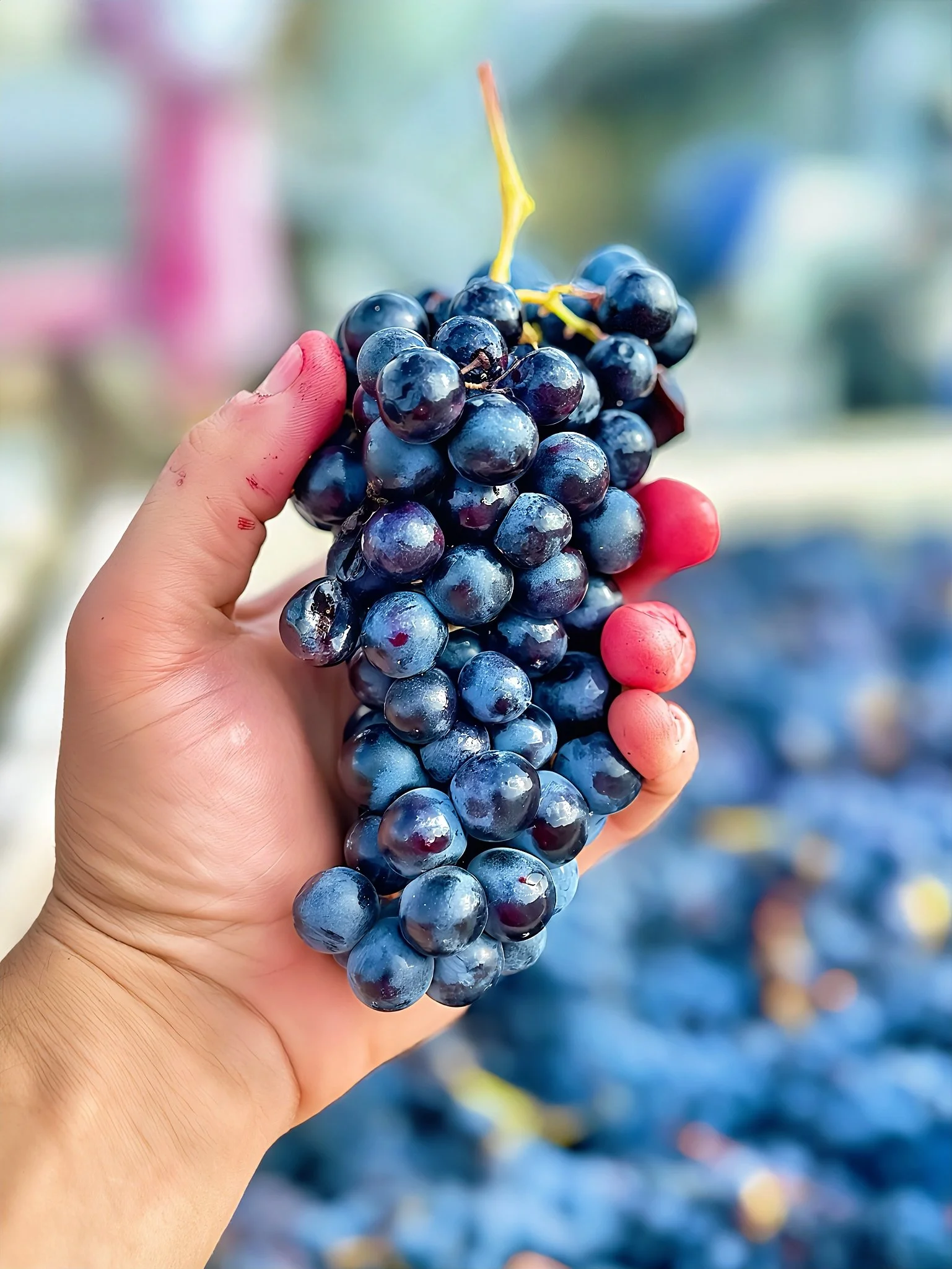
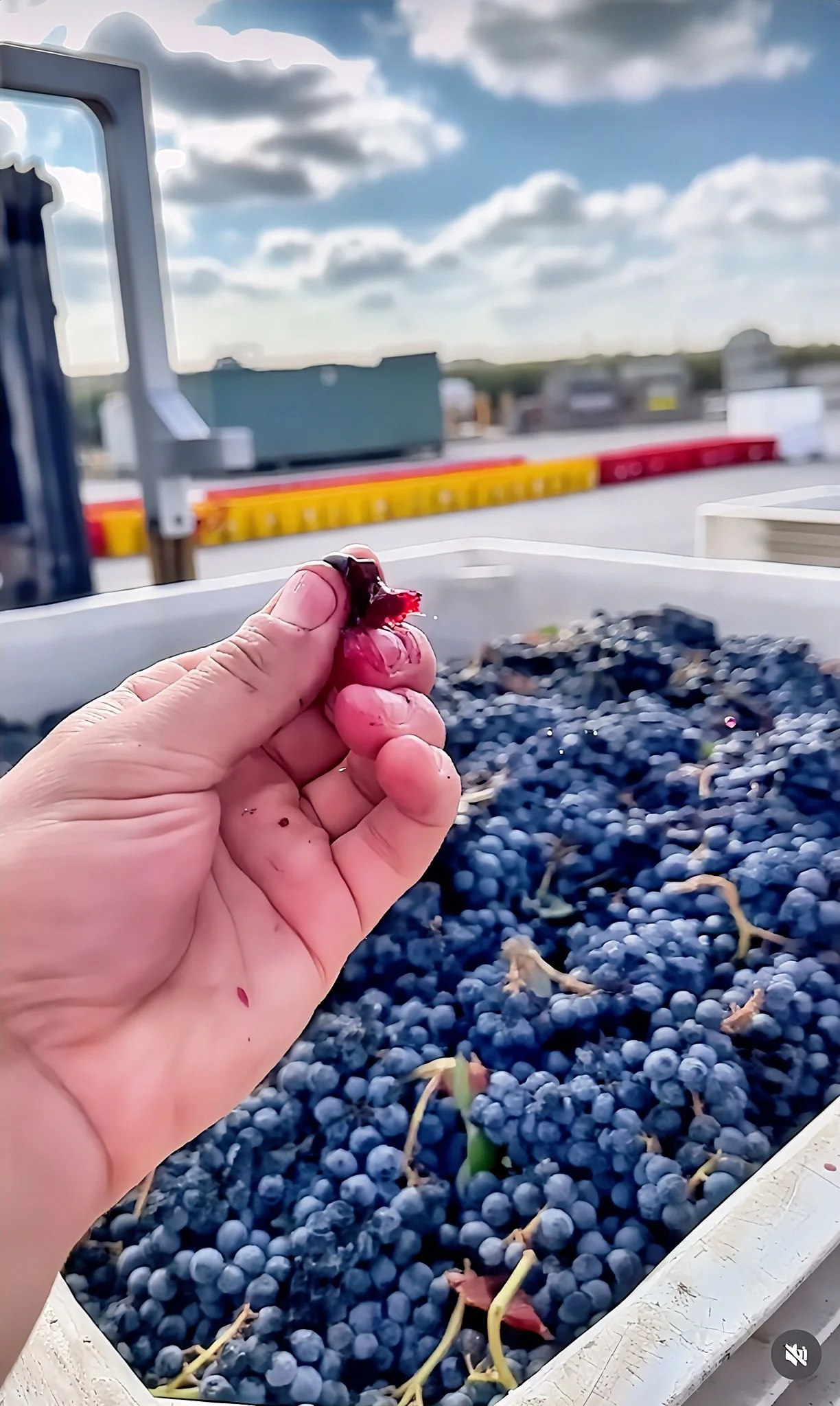
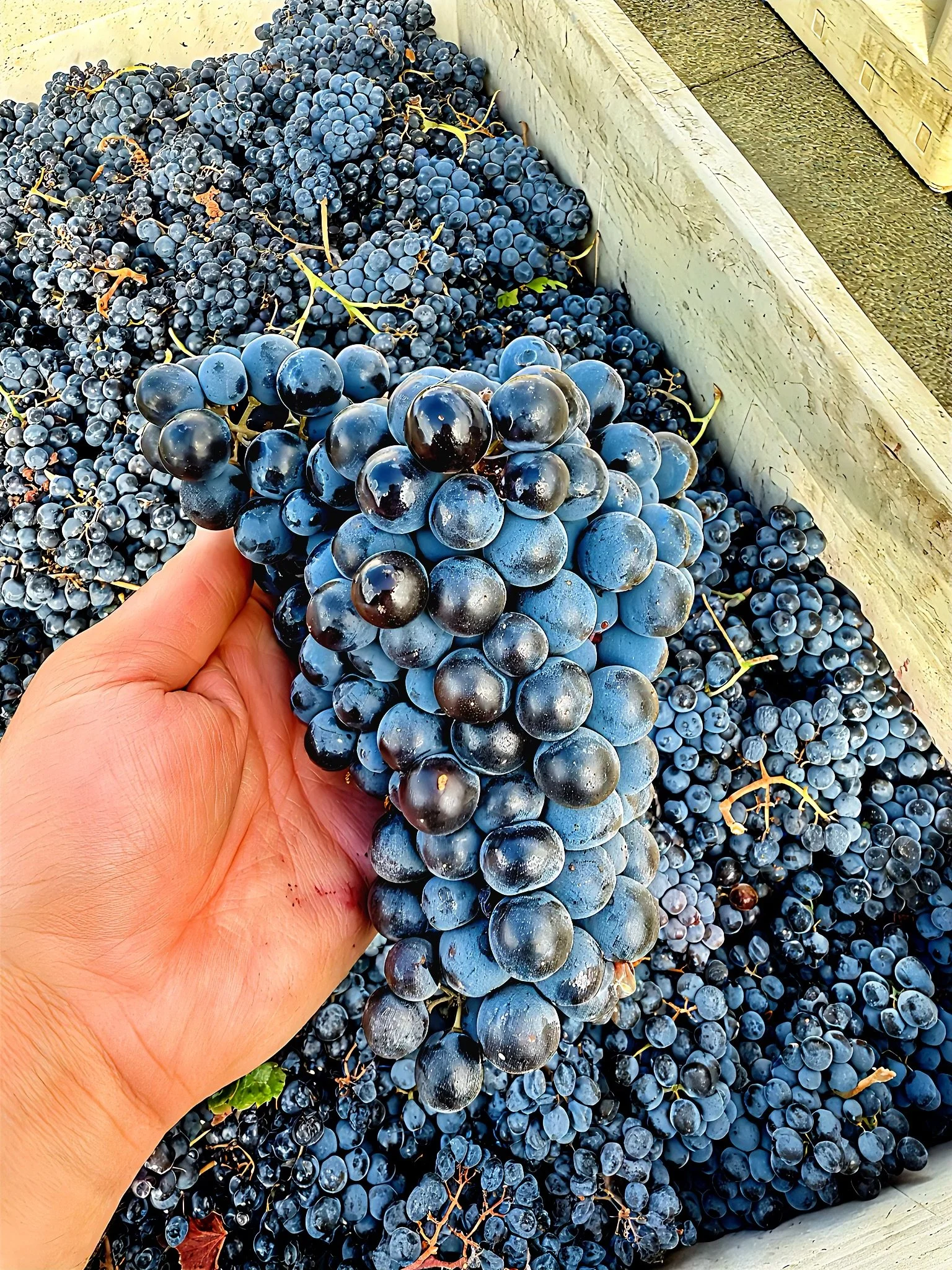
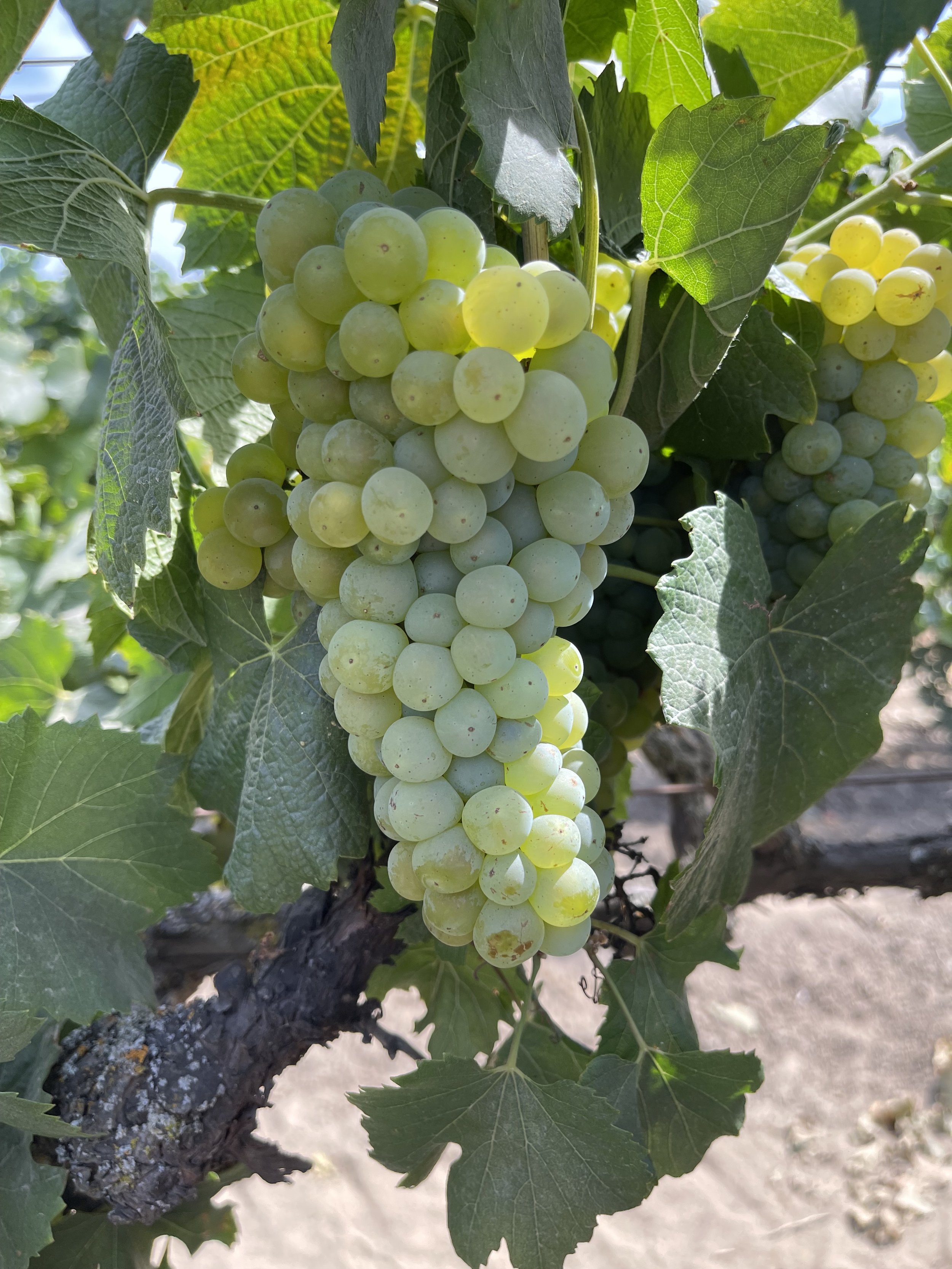



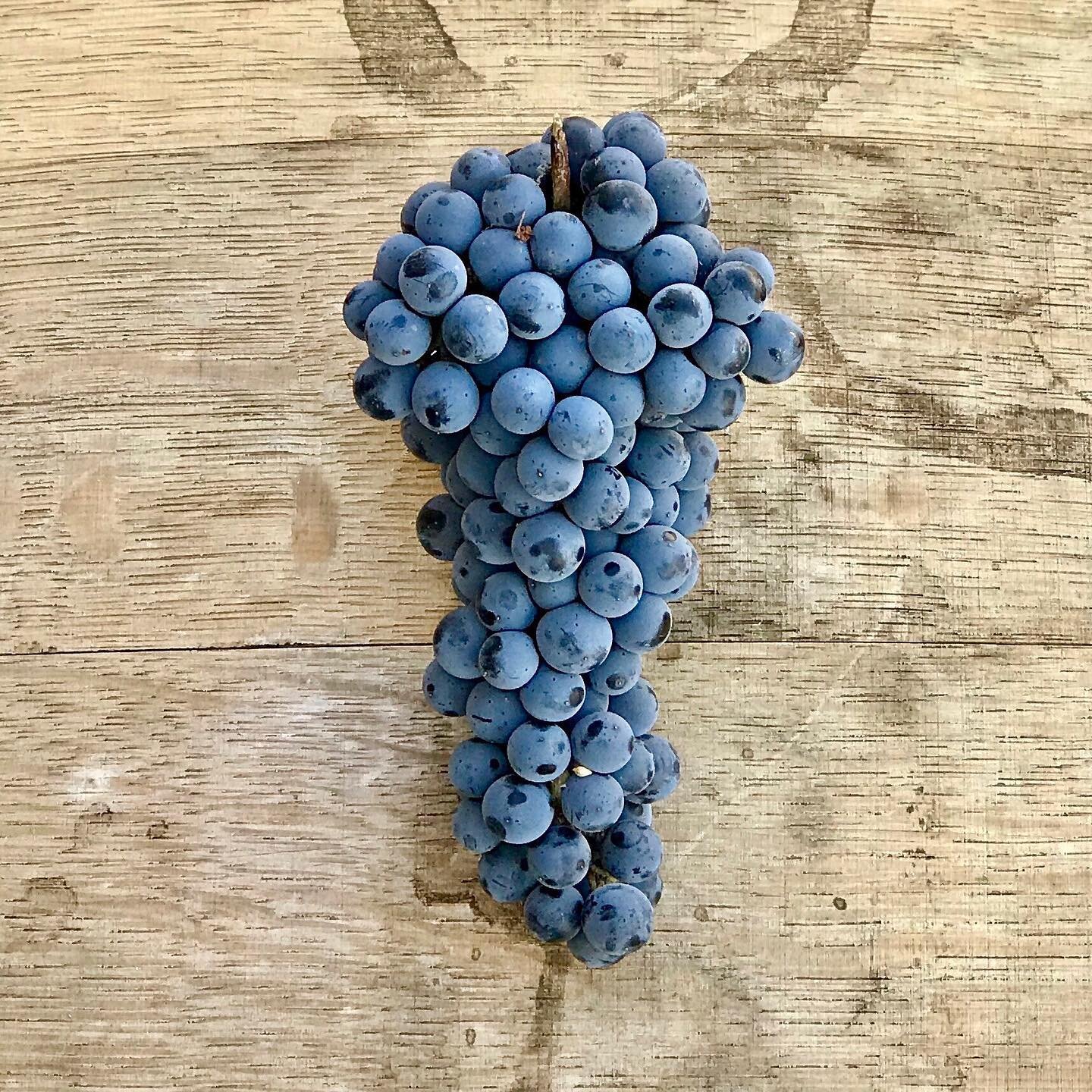


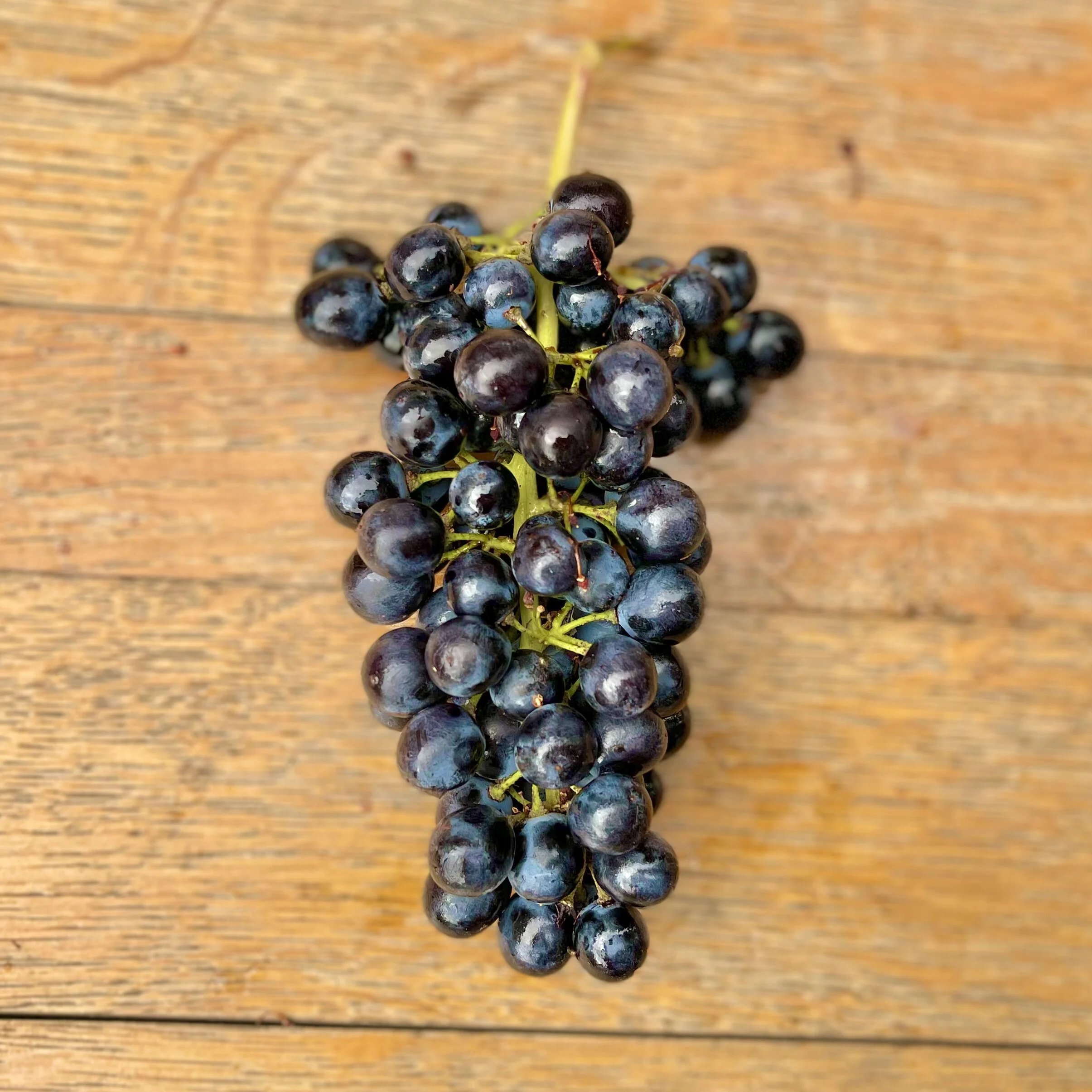

Each pail includes 5 gallons of grape must
Product will arrive partially frozen.
Rutherford AVA, Napa Valley, CA
Brix: 27.0 , pH: 3.64 , TA: 3.5 , YAN: 99 mg/L
(Full ETS Lab Report in photos)
Harvested and destemmed: TBD
2025 Alsace Vineyard Merlot
A Rare Expression from Rutherford’s Alsace Vineyard
Just north of Oakville and bordering the Silverado Trail, Alsace Vineyard lies within one of Rutherford’s most prized corridors of red and brown gravelly loam. These well-drained soils and optimal sun exposure yield fruit that balances power with precision — the hallmark of this legendary AVA.
Under the meticulous care of Garvey Vineyard Management, the 2019-planted Clone 15 Merlot ripens evenly, developing deep tones of plum, blackberry, and earthy spice while maintaining freshness and structure. The result is a modern, poised expression of Rutherford Merlot — rich in character yet refined in texture.
Renowned among Napa insiders, Alsace Vineyard has produced wines earning up to 99 points (Wine Spectator) and 97 points (Robert Parker), cementing its reputation as one of the region’s elite sites. Here, warm afternoon sun, cool nighttime air, and the area’s distinctive “dusty” minerality converge to craft fruit with depth, elegance, and unmistakable Rutherford pedigree.
Flavor Profile & Winemaking Potential
The berries are loaded with dark fruit and plum, blackberry, and black cherry flavors, supported by classic earth and spice notes. For Merlot, the fruit shows an unusually vivid, spicy character that adds complexity without losing balance.
Expect excellent tannic structure and enough natural acidity to produce wines with richness, grip, and age-worthy depth — ideal for winemakers seeking a bold yet refined Rutherford Merlot.
Highlights
Vineyard: Alsace Vineyard, Rutherford AVA, Napa Valley
Varietal: Merlot (Clone 15)
Planted: 2019
Soils: Red and brown gravelly loam with excellent drainage
Farming: Sustainable and fish-friendly, managed by Garvey Vineyard Management
Flavor potential: Plum, blackberry, spice, herbs, earth, and long fine-tannin finish
Retail comparison: Finished wines from this vineyard have earned up to 99 points (Wine Spectator) and 97 points (Robert Parker)
Extremely limited. Singular to Rutherford.
Provenance Note: This product is made from fruit sourced from Alsace Vineyard in Rutherford, Napa Valley. The vineyard name is used here for factual origin reference only and does not imply endorsement or affiliation.